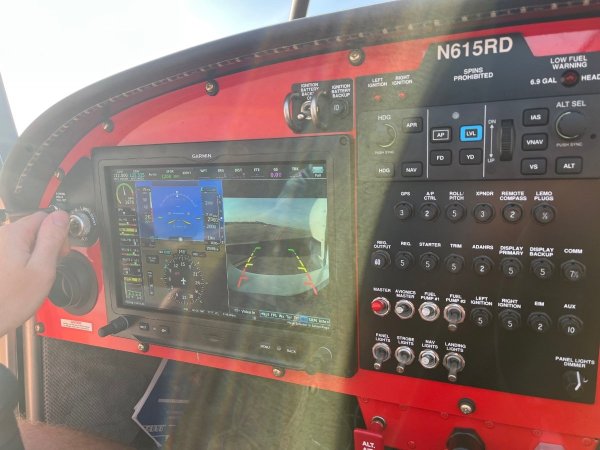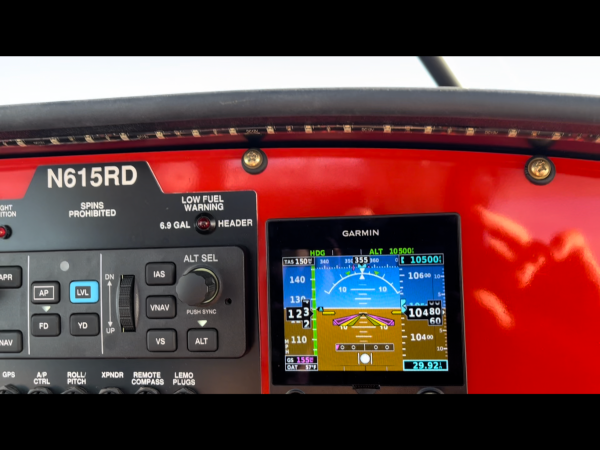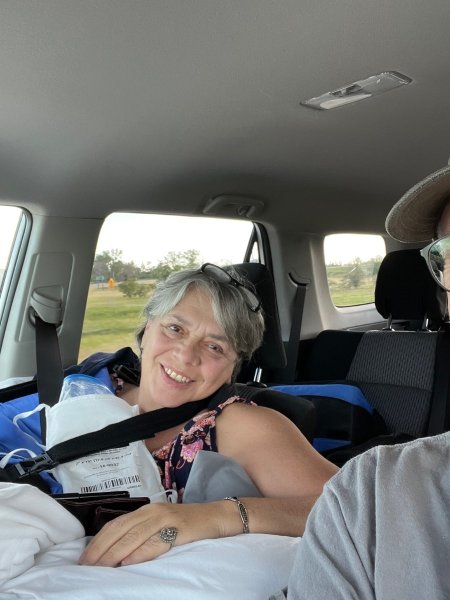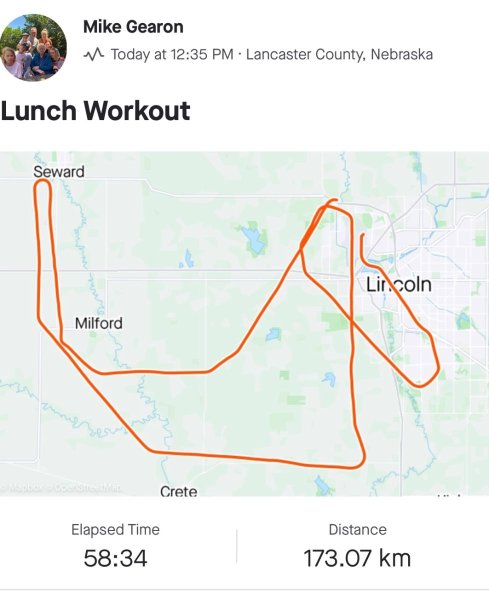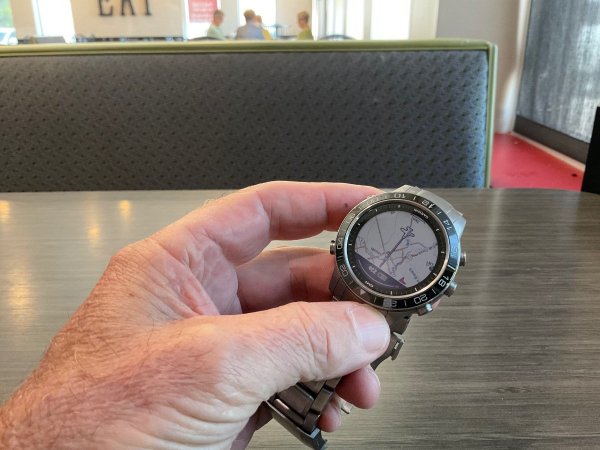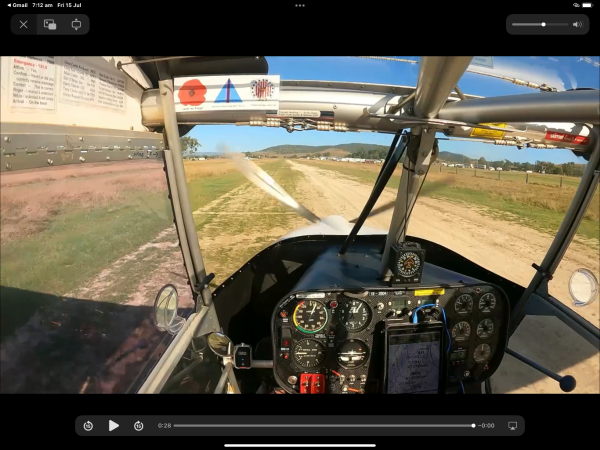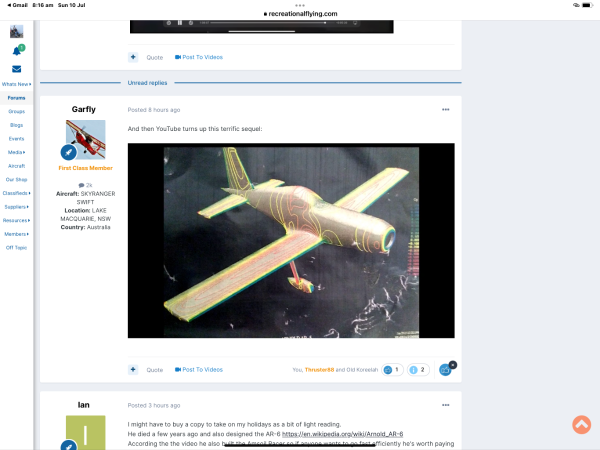-
Posts
571 -
Joined
-
Last visited
-
Days Won
10
Content Type
Profiles
Forums
Gallery
Downloads
Blogs
Events
Store
Aircraft
Resources
Tutorials
Articles
Classifieds
Movies
Books
Community Map
Quizzes
Videos Directory
Everything posted by Mike Gearon
-
I talked to an ex military pilot recently (USA) . He just gave up on CASA conversion. Mine apparently has moved to a senior decision maker and that was a while ago. They have been very helpful. It’s just slow. There must be a number in my position. I can understand not wanting to go on a NGT VMC checkride. My last USA flight was with a really experienced guy. Ex everything including a long stint in accident investigation. Preflight I noticed each time we flew he did a thorough walk around and checked detail like rudder cable connections etc. Never touched the controls on my take offs and landings. Also, shadowed the yoke in close. That’s experience on display.
-
Funnily enough I talked to the old Nynja importer and he mentioned a tail wheel version in Australia and it was a real handful. I later ended up talking with the owner/ ex owner because he was considering being a ferry pilot for the Nynja I’ve sold. That’s my job it seems up to Dubbo next week on its way to Lismore as change over point. Answer as far as I know is that it’s possible but you’d not want to. Tail is already a handful! I noticed you flew the A32. Nynja is about in between the A22 and 32 in performance. 105kn cruise 5400rpm. Doesn’t float like the A32. Very well behaved.
-
2 1/2 hours IFR simulated flight with an ex IFR examiner and a simulated checkride….Can’t say it went perfectly. Was bloody surprised how well it did go. Transitioning from Omaha departure to Minneapolis Center then to grand island tower then reversed and I handled all radio and approaches without a heap of difficulty. Approach to Lincoln I screwed up radio call and tower covered for me. Midwest people are generally really nice! Surprised how IFR suddenly becomes achievable. Only problem my instructor had was that I may “finish up” in Australia. I took that as confirmation I’m on the way to the finish line. I’ll pursue IFR in Australia and finish up FAA IFR in USA next year. Couldn’t do IFR exam in Lincoln so booked it and took in Honolulu. 84%. I’d have liked better. From reading on IFR exam in Australia it seems harder? USA has some 1200 questions they’ll present 50 from and 70% pass rate. Oh yeah, spectacular tree Waikiki. Moana Surfrider.
-
Flew with chief instructor Rich again today. First time I’ve done all radio work. 2 approaches, 1 extended hold and a course reversal. Rich sorted my previous problem with distraction during radio or gps programming. When on GPS scan back to just attitude and more importantly trim out for hands off then go hands off. Worked really well. Almost 2 hours and I enjoyed it and wasn’t tired. Bloody surprised! 1 more flight tomorrow with the instructor instructor then off to Hawaii for 3 days then home. Good part is I do IFR exam at Honolulu. Booked. IFR aerobatic. I turned that sucker upside down and tried it. It insists on upside down.
-
Thanks for that. I flew with the instructor instructor today. 67 year old retired from the airlines and an extensive period in the FAA. I was surprised because he wouldn’t let me off any radio calls 😀. When I really gave up he just called approach with “say again” I had to step up. Just the right amount of assist on the approaches. Definitely helps to mix up the young instructors with the hugely experienced ones.
-
Only another week then heading home. IFR has been a journey I’d really prefer to have had a better map for. After first lesson and a basic understanding of the fine control and scan needed I’d 100% ask to sit back seat on an approach with my own approach plate open and watch and listen to com and record on a hand held GoPro. I think that’d be 20 hours ahead of the 40 hours I’m at now…. Speaking of maps… that little blue aircraft in the approach plate below makes such a difference. Also being able to make notes directly on the approach plate in foreflight. Not sure if AvPlan has similar. If I do IFR in Australia this is essential to stay ahead of the aircraft. Just circle the FAF and notate altitudes and call out altitudes and I realised yesterday I can augment the Garmin navigator and aircraft nav aids just by zooming in on that plate. Instructors make such a difference. I thought I might give up on myself or Hunter would give up on me after a truly awful approach with communication induced error and no real recovery and a real missed approach. I decided to leave it behind and he brought his A game to help setup the Garmin. 90kn approach held and it was near perfect. FullSizeRender.MOV
-
Hays, Kansas. Flew the TD S21 Titan 180hp with Marc while Randy was in the Tricycle with Rotax 915is. 140hp. We predictably climbed out way faster then predictably the rotax turbo gave a bit of push up high. FL105 Pics. love that taxi camera in the G3X! TAS 130kn at FL105 37lph and about the same from Rotax. Nic and I have returned to the Titan 180hp with whirlwind ground adj prop. I’ll discuss in another thread why. Like beautiful scenery out the window I never tire of seeing aircraft come alongside. I stopped filming just as Randy peeled off like a dive bomber on a run. Only just found out he used to fly aerobatic shows. No wonder he can make the aircraft do things I’ll never dream of repeating. FullSizeRender.MOV
-
Back from OSH Kosh. Flew with chief flight instructor Rich. 1.9 hours. I did okay. Debrief I found out I’m spending a buck and a quarter and only have a buck. We will aviate and navigate but not communicate next few lessons to get back to 75 cents. Then see if we can manage the dollars worth. I’m now doing AR Sim. A phone app that progresses your radio. Only problem is it demands a strong American accent. Refused to accept “Hawker” until I had it pronounced hoahrkerrr. Horka won’t do it. We don’t realise the w and r are barely pronounced in genuine Ozzie English. Pics. Flight today. Rich the chief instructor Mosquito helicopter at Osh Kosh. I’ve heard Victa lawnmowers that sounded more healthy. Fascinating to watch that tiny helicopter hover and turn. Tiniest of pilot inputs. I never want to fly one.
-
Well, we have a mutual aquantaince who was very vocal on why I shouldn’t train IFR. It did flip me into glider training and I’m thankful for that experience. I then went on to floats in Alaska and one of the guys there was a Kiwi. Fisher and Parker engineer who developed that wonderful direct drive. He had just completed IFR and told me how much it improved his flying. I’d also read a book on the accident curve. At 350 hours and IFR the rate of accidents reduces dramatically. Bloody statistics. Annoying as they are they you can use to separate fact from biased opinion. Time and money? At 64 I’ve just sold the business that took most of my time for over 2 decades. I guess a few of us are at the age where we both have loads of time and aren’t sure how much of it we have left. Is it better spent watching tv? Probably not. Money? Difficult subject probably best not discussed other than I’m very happy to have spent the say 20k AUD I’ve put into this. I noticed when I came back to CTAF’s last year after initial IFR training the radio calls and situational awareness were suddenly so easy compared to being under the hood talking with ATC. I have 20k invested in safe flying at this point. Radio and situational awareness hugely increased in VFR conditions minus whatever farm machinery induced hearing loss and whisky induced cognitive decline is going on. IFR flying… My Lincoln NE dentist pilot friend/ fellow Rans S21 builder was explaining while I had mouth full of dental tools how he did IFR 20 years ago then flew IMC and was so shook up he had his commercial pilot brother fly him home. I also listen to “There I was” The AOPA podcast on pilots who,survived some bad shit. Yeah, don’t do it. Practice…. If I make it through I’ll practice and maintain proficiency. 6 approaches and a hold per 6 months isn’t that arduous. I’ve been amazed how the scan starts to happen on its own. My personal favourite is V and inverted V. That rudder ball is a slippery little sucker in IFR. No nose to horizon to sort. Amazing OSH Kosh fact….. I get to show yesterday and 2nd stand I see is the Diamond 4 seater with 40ft wing. Spectacular aircraft.. have to have a look. Then I see Marcel. Marcel has flown his Husky into my farm runway and I’ve known him for 40 years. What are the chances! We will watch the OSH Kosh night show together with wives tomorrow night.
-
Just arrived Dubuque. 6 hours and I did wonder f I should have told that story. Glad I did and very thankful for support. Speaking of which…. Deb did really well. Good padding helped. Osh Kosh tomorrow
-
Enjoyed watching the dog and the take off. Very cool. Landings please! That’s an interesting strip! I’ll share my tail of woe from yesterday. At 350 hours and 35 IFR hours I was feeling confident. Actually thought about following IFR with commercial. Then yesterday happened. We almost always take off 17. Easy read back… at or below 3500, maintain runway heading change to 124.0 taxi echo via alpha to 17. All the radio stuff that used to feel impossible now easy across 5 frequencies from atis to clearance to ground to lincoln tower to Omaha departure.. Instructor decided we’d do an intersection departure from 18. Completely threw me. On my own I’d have been heading up 17 after actually reading back the 18 instruction. I was remembering hold short 17 and was headed to do that. I’ve learned to leave the mistakes behind. We all make them. Biggest mistake I’d been making in the past was dwelling on them instead of getting ahead of the aircraft. Recovered then because the plans I’d made for cross country couldn’t be done my carefully prepared approach plates and homework were out the window. Thrown a second time. OSH KOSH this coming week. My wife is bravely going to travel with me 4 days after a shoulder operation (boating accident South Dakota ongoing repairs) I haven’t told her the surgeon said she would be too uncomfortable to travel the 9 hours in car. My compromise is half today and stop in Dubuque Iowa. I’ll work out if IFR continues. I know 2 things. No more afternoon flights. I won’t do banking in the afternoon due to decreased performance. I’m not going to do IFR in the afternoon either. I also won’t fly with a young instructor again with the added bonus I won’t have good landings messed with. Assistance to float back up from a great landing can be disappointing! I’m at the stage where I need seasoned instructors to help bring it home. IFR test at 86% and I sit the exam at 90% for a 70% pass. Doable! IFR checkride…. 90% not this year. Maybe back in Oz with Nic in between building aircraft. Mid August back to Oz and Nic and I build very cool aircraft. Images…. Orange was my screw up turn. Red was the intersection departure we actually made. runway 18 just ahead has one of the presidents 6 aircraft. One of them is always 2 hours from POTUS and yes, you wonder why they’d bother with Trump or Biden. other pic was a boat psssingnthrough swing bridge at Omaha. I gave up and just asked the instructor to fly us home. No point in accumulating IFR hours I didn’t need while really unhappy. OSH Kosh will fix this.
-
Yes, Cessna has a clock with reset. I also purchased a stand alone clock. I absolutely get how useful this is. Especially after prop stop from not setting 30 minute alarm to change tanks! Thanks for asking. I’m with my old CFI tomorrow as safety pilot so he can log approaches and holds. Looking forward to an easy flight for once 😀My job apart from lookout will be working on radio calls. Slowly improving.
-
Here’s the game changer. IFR clearances can be long…Yeah, I know! As in video… Just write them down and don’t think about them as you do so. A question stops information coming in, Well, that’s what the video says (Sportys IFR course) and I’d like to add you are expected to start on the new heading immediately. ATC don’t like it if you don’t immediately start on new heading. Otherwise, yes. Write and reply then take time to understand. Today was actual IFR. Coming into Crete we had simultaneous hood off and out of clouds. Crete had a breakfast flyin with numerous spectators so landing had to be excellent. 350 hours and 35 IFR hours now. I can’t recommend enough doing and sticking with IFR training. It’s sharpening all the things I’ve learned over 3 years and adding big time. IMG_1092.MOV
-
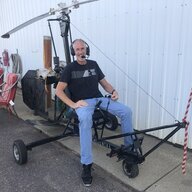
Emergency landing and inversion 13/06/2022
Mike Gearon replied to tillmanr's topic in Aircraft Incidents and Accidents
I think the last sentence most important. I have been forgetting to enjoy it. Trying to take pleasure in great take offs and landings with the view out the window while it lasts. Agreed 100% on sim. I don’t think it’s as common in USA outside the large cities. All done in aircraft. Rapid city as example. No chance to sim and people even driving 3 hours from Wyoming to train there. Proficiency. Yes, I’m very confident under hood as of this week. Scan is effortless. I also like the reminder this doesn’t stick. It falls away quickly. I’ve heard a number of pilot stories at Linocln. Great thing with having a hangar I’m right next to the hangar that seems to have a bar in it. Up to 8-10 pilots gathered some late afternoons. Good knowledge soak. IFR training has suffered from 3 moves. Phoenix, Rapid City to Lincoln. Can’t blame anyone for it. I now know what is needed and I work toward that with good instructors. -
IFR training at Lincoln, NE. Garmin MARQ automatically starts when I take off then sends the flight to Strava as a “run”. It’s impressed my Facebook friends. Pic here is it deciding while indoors it can direct a flight back to Lincoln from the coffee shop. That and oxygen sensing and being my birthday present almost makes the 3k AUD okay. IFR training at 32 hours is finally a little easier. Holding attitude and heading while under hood easily while programming approaches in the Garmin 650 even in windy thermslling conditions today. Final little ARC in approach track above Lincoln in map was circling approach. Runway 32 then circle around and land 35. I actually enjoyed that bit amongst the torture. Programming and Flying approaches now seems easy. Test IFR exam at 82% and will exam when I hit 90%. Same 70% pass needed like CASA. Radio not easy. I’m going to spend time listening to ATC live and give my wife random long heading and altitude info with “cleared for approach etc I’ll read back. More than 3 items and I’m struggling still. I’m thinking both practice and good prep/ understanding of approach plates will help. That and just more time on radio. Bloody faulty call buttons in 2 or 3 of the 7 aircraft annoying. I showed the instructor the indentation from trying to wiggle and push the damn thing into working. How much is a call button? 2 1/2 hour lesson with say 1 1/2 hour flying is some 400 USD/ 600 AUD. They make enough to replace call buttons.
-
Your cockpit organisation is impressive. I like those checklists and tail number reminders. Very cool. I will duplicate! Nynja rudder authority… That’s it. Fuel behind the pilot as original design. Way better in the wing tanks. Changing COG throughout the flight would be annoying to say the least so who’d want to go back there. It does seem a mod is in order though. Question is… would say another 50mm of up elevator as example be enough to allow the nose to lower more gently under 40-45kn?
-

Emergency landing and inversion 13/06/2022
Mike Gearon replied to tillmanr's topic in Aircraft Incidents and Accidents
I’ve just seen this post. Sad thing is I couldn’t even tell you if the Melbourne Crazy Horse is still there. -
Nynja is a little lacking in elevator authority landing. That’s about it’s only negative to a great little aircraft.
-
simulator here is crap. They get a new one September. 3 curved 50” screens. This one is worse than useless. At least a 2 second latency. It’d be great to pause and review or pause and correct. Last flight when approach gave me too much and I was rattled I delayed turning. Still, it’s a lesson. Hear the heading and altitude and turn and start descent etc as it’s read out. Ask again for the rest. Anyway, that’s my current take on it. As far as safety goes we have the instructor. 200ft AGL foggles off. I’ve never or so far had the slightest concern with safety. Yes, if I was just 30 years younger I’d go Air Transport Rating. My ATR friends here invariably say they’ve never had a job. They just get to fly. I’m starting to think I could do this. Practice exam at 81% yesterday and just need one more 80% or higher and I can sit the IFR exam. I won’t do so until I hit 90%. I’ve discovered prognostic charts are actually useful and should be understood. Work in progress. I reviewed Omaha approach ILS 14L and I could do this on my own right now IFR. Barely. Like the 90% exam I won’t take IFR checkride unless super confident. There’s always 2023 to take it after a 1 year breather then reinforce all I’ve learned. Image below. Waypoint/ fix CFTZP is puzzling. I read the 5 letters must be pronounceable. We had a bit of fun attempting it. Australian ZED and USA ZEE didn’t help. I’m really glad the instructor didn’t push us over to 14L. He was telling me we were right of course and I could see it on instruments….Just didn’t want to over correct close in. Lesson learned! In a repeat I’ll take a very definite 5 degrees briefly then straighten up again even before needle centres. Repeat as required smaller closer in. 14R burned into memory,amd we weren’t completely over to it.
-
I flew in the Nebraska cornfields with an 802 called himself Whisky 3 years ago. All his work season was my learn to fly season. I guess you run Wire cutters on the wheel struts? I was told by Whisky these are handy for the obvious reason and he’s used them once. Wonder what the compliance rate is for a paper plan? That being said I have one for a trip on the knee pad. I want it all laid out in sequence with contingencies. We certainly don’t for the IFR stuff I’m doing in USA. It’s all iPad.
-
Does all the reg stuff look like this? I’ve read that 3 times and it doesn’t make any more sense so no point in 4 goes. I suspect it actually says Experimental aircraft can’t have these rules applied to them and can’t fly IFR. 26.16 Application — VFR and IFR flight requirements do not apply to certain Australian-registered aircraft (1) In this section: relevant aircraft means any Australian-registered aircraft that is not an experimental or light sport aircraft. (2) Division 26.3 or 26.4 of this Chapter does not apply to a relevant aircraft if the aircraft is fitted with equipment, compliant with the requirements of, or approved under, Part 21 of CASR, which provides for the aircraft’s intended operation a level of safety equivalent to that which would be achieved if Divisions 26.3 or 26.4 (as the case requires) applied. (3) For subsection (2), CASA’s consideration of safety equivalency must take into account whether the type certificating authority for the aircraft considers that the aircraft achieves, for its intended operation, a level of safety equivalent to that which would be achieved if Division 26.3 or 26.4 applied. (4) For subsection (3), type certificating authority means such an authority of a recognised country.
-

Considerations in Engine Cowl Design
Mike Gearon replied to skippydiesel's topic in Aircraft Building and Design Discussion
We will get along! I met up with an old friend yesterday who problem solves high end jets. He spent 2 hours explaining last weeks problems including a reverse thruster problem nobody could solve for a year. He hooked up all,his sensors and had the guys taxi from 40 to 60 knots. Risk taking there!. If he’d not found the problem there would have been grumbling over that. Bingo, at high speed taxi he found interference that caused the intermittent problem. A small adjustment snd the interfering part no longer doing so. All stuff that isn’t in manuals. Anyway, what would probably bore a lot of people I’m fascinated by. Great video. Screen shot of the interference coming up over canopy area. I’ll keep going on video… -
Excellent. I’ll not research and simply abandon any IFR ambitions in Australia. you’ve saved me a lot of time. Flew Lincoln to Omaha yesterday and back with 2 approaches. All good until I was given a long read back fixes, headings and altitudes and couldn’t deal with it. That’s why we have an instructor! Take over the radio. At this point I’d say as I was advised. IFR training makes you a better safer pilot. That’s enough to justify the current torture and I don’t have to reach the finish line. Even the FAA SEL PPL conversion is challenging. CASA are steadily working with me. It does however seem to be something they usually do for flight crew. It’s a work in progress that’s been going on for many months. They are suggesting I convert the RAA certificate. I don’t care which works. Just the simplest option so I can fly the RANS S21 as N number in Oz. I submitted on form 61-9TX for foreign license conversion. RAA conversion is apparently form 61-1RTX
-
IFR aircraft instrument rules for flight USA FAA USA FAA requirements are surprisingly loose. Obviously pilot must be rated and have 6 approaches in sim or IMC past 6 months and equipment periodically checked. Generator/ alternator, rate of turn indicator, attitude indicator, ball, clock, altimeter, radio/ nav equipment (appropriate for flight!) DG/ heading indicator. IFR aircraft instrument rules for flight Australia CASA I suspect the kit build and Garmin G3X GNX375 we will use on Rans S21 won’t meet requirements in Australia. Can anyone shed light on this? I’ve been digging a bit with hard going… I think there’s a 50% chance I’ll finish IFR training here. Well, it changes day to day. Almost confident and just a few years younger and better hearing more energy and I’d be 90%. Whatever happens it’s definitely a huge learning curve and worth the time and effort to safer better flying. Pics…..instructor was jumping out of his seat a few days back. The actual IMC conditions allowed him to log the approach to Lincoln NE. 😀 IMG_1043.MOV











